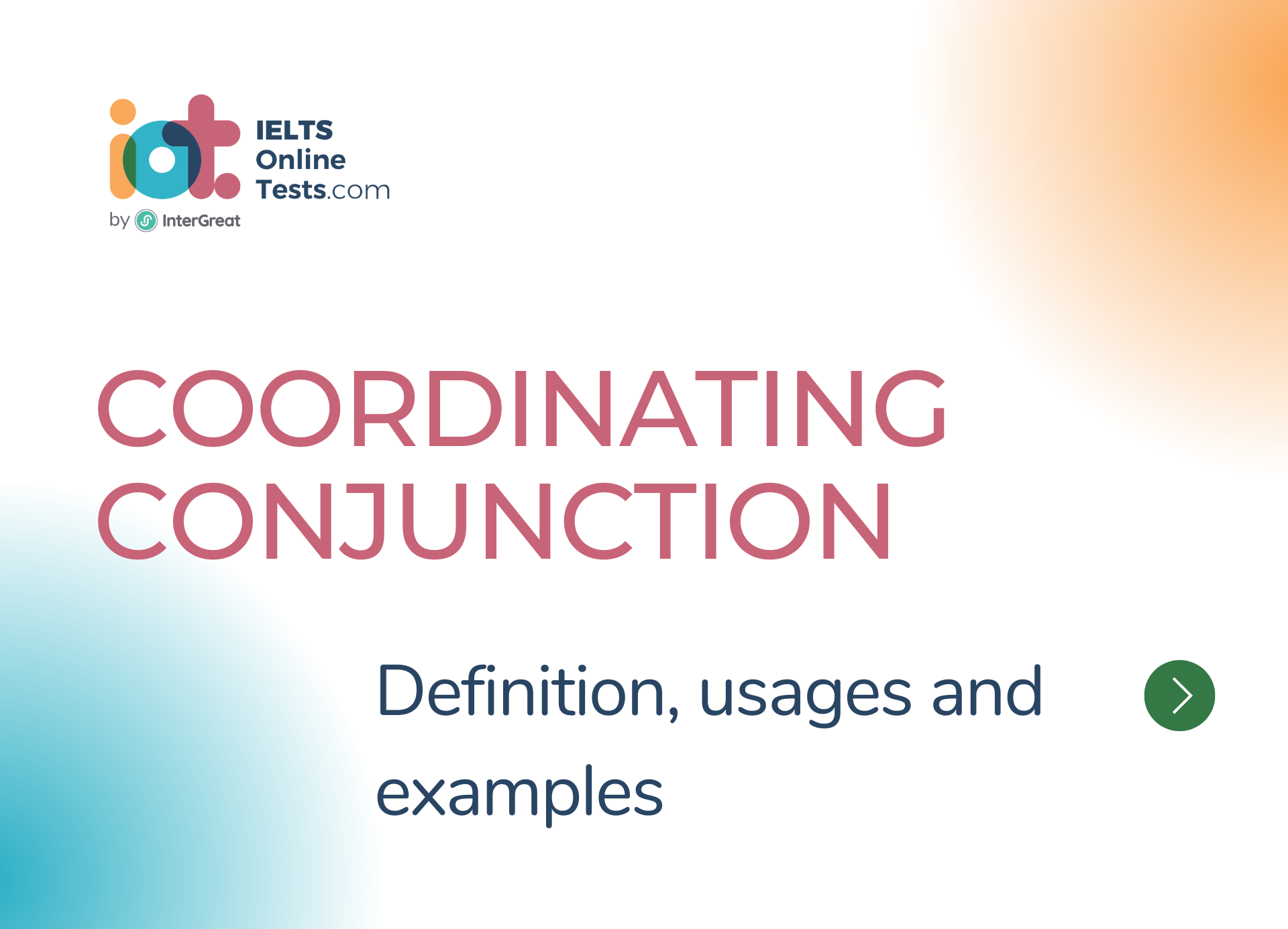
Coordinating conjunction definition, usages and examples
Coordinating conjunctions are a type of conjunction that connects words, phrases, or clauses of equal grammatical importance within a sentence. They help to join similar or related elements and show the relationship between them.
Here are some important details about coordinating conjunctions:
Types of Coordinating Conjunctions:
- "And": It joins two or more similar or related elements, indicating addition or continuation.
- "But": It shows contrast or exception between two elements.
- "Or": It presents a choice or alternative between two elements.
- "Nor": It expresses negative coordination and is used to join two negative elements.
- "For": It provides a reason or explanation for the preceding statement.
- "Yet": It introduces a contrasting element or idea.
- "So": It indicates result, consequence, or purpose.
Usage:
- Coordinating conjunctions can join words, phrases, or clauses.
- When joining words or phrases, the coordinating conjunction comes between them.
- When joining clauses, the coordinating conjunction usually comes before the second clause.
- Example:
- "I like both coffee and tea."
- "He wanted to go to the party, but he had to study for his exam."
- "Do you want to go for a walk or stay at home?"
- "He neither understood the question nor knew how to answer it."
- "She worked hard, for she wanted to achieve her goals."
- "He failed the test, yet he didn't give up on studying."
- "He studied hard, so he was able to pass the exam."
Parallel Structure:
- Coordinating conjunctions are often used in sentences with parallel structure, where similar elements are presented in a balanced and parallel manner.
- Example:
- "She enjoys reading, writing, and painting."
Coordinating Conjunctions in Compound Sentences:
- Coordinating conjunctions are commonly used to create compound sentences, which consist of two independent clauses joined together.
- Example:
- "She studied for the test, but she forgot to bring her textbook."
Commas with Coordinating Conjunctions:
- When joining two independent clauses with a coordinating conjunction, a comma is usually placed before the conjunction.
- Example:
- "I have finished my work, so I can go to the party."
Coordinating conjunctions are versatile and essential in constructing well-structured and coherent sentences. Understanding their usage and the different relationships they convey will help you effectively express ideas and create meaningful connections between elements in your writing and communication.









Comments: